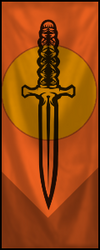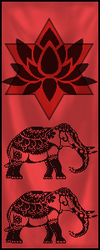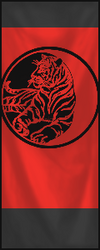More actions
No edit summary |
|||
| (47 intermediate revisions by 8 users not shown) | |||
| Line 8: | Line 8: | ||
*Auld-kin (praising) | *Auld-kin (praising) | ||
*Estallorn (derogatory) | *Estallorn (derogatory) | ||
|languages = | |languages = Agasi and in some rare cases Altalar. | ||
|distinction = Contemplative, Spiritual, Demon taming Fire-Elves. | |distinction = Contemplative, Spiritual, Demon-taming Fire-Elves. | ||
|maxage = 500 (though functionally undying) | |maxage = 500 (though functionally undying) | ||
|height = Average to tall | |height = Average to tall | ||
|eye = Any shade of brown and rarely green. | |eye = Any shade of brown and rarely green. | ||
|hair = Any | |hair = Any dark Brown, Black, and reddish Brown shade. | ||
|}} | |}} | ||
[[File:ColorMeSylfina.png|260px|thumb|right|Half Suvial are fully integrated in Suvial society and considered full blood by them, though only if they follow Estelsoor, and the same brutal expectations are placed on them just like full-blood Suvial children.]] | [[File:ColorMeSylfina.png|260px|thumb|right|Half Suvial are fully integrated in Suvial society and considered full blood by them, though only if they follow Estelsoor, and the same brutal expectations are placed on them just like full-blood Suvial children.]] | ||
[[File:New Canvaskhggkfgdfhd.png|260px|thumb|right|Suvial do not believe there is such a thing as “too much gold”, gold can go anywhere, everywhere, at all times as decoration and wealth-expression.]] | [[File:New Canvaskhggkfgdfhd.png|260px|thumb|right|Suvial do not believe there is such a thing as “too much gold”, gold can go anywhere, everywhere, at all times as decoration and wealth-expression.]] | ||
[[File:New Canvasjyfmynggefds.png|260px|thumb|right|Shawls, scarfs and other neck or upper chest covering cloths are very commonly worn by the Suvial, especially women, and considered comfy and practical (for Regalia’s colder weather).]] | [[File:New Canvasjyfmynggefds.png|260px|thumb|right|Shawls, scarfs and other neck or upper chest covering cloths are very commonly worn by the Suvial, especially women, and considered comfy and practical (for Regalia’s colder weather).]] | ||
Hailing from the Suvial Princedoms of Agnevaal, in their native tongue the Agne ke Vïjaya Raajecemaan, the Land of Fire, and the Scars of the World, | Hailing from the Suvial Princedoms of Agnevaal, in their native tongue the Agne ke Vïjaya Raajecemaan, the Land of Fire, and the Scars of the World, are the Suvial, a very distinct branch of [[Allorn]] [[Elves]] that have ventured in a radically different direction than the other Allorn Revanchists or even the [[Regalian]] Realists. The Suvial represent a people who have achieved transcendent [[Magic]]al control beyond that of other [[Races]], not specifically in their ability to cast Magic better but not to be constrained by the Dimensional forces that naturally tear each other apart. The Suvial stand strong in their Mysticism, limited adherence to the [[Estelley]] faith, and fiercely independent attitude towards both [[Kathar]] and Allorn encroaching Empires. | ||
==Core Identity== | ==Core Identity== | ||
| Line 24: | Line 24: | ||
===Transcendence=== | ===Transcendence=== | ||
The concept of unifying, combining, marrying or harmonizing opposing forces means so much more to the Suvial than | The concept of unifying, combining, marrying, or harmonizing opposing forces means so much more to the Suvial than unlocking the potential of symbiosis. The idea of harmony in spirit, body, and mind is central to Suvial learning and is found even in concepts like art, architecture, and cuisine. The Suvial consider the reality that other Races are anchored to as archaic, banal, and unworthy of observing the basic tenets of, instead trying to break it and prove their intellectual and insightful superiority over all others. | ||
===Land of Fire=== | ===Land of Fire=== | ||
To call | To call fire a strong theme or symbol in Suvial culture is an understatement - the reality is closer to an obsession. Fire symbolism is everywhere in their clothing, jewelry, architecture, and how they cast Magic. To see a Suvial who does not use fire as a conduit for their spellcasting is odd, one that the other Suvial are not too keen on. Therein also lies a hidden truth of the Land of Fire: extreme conformity, and expulsion for those who cannot conform. | ||
===No Servants, No Masters=== | ===No Servants, No Masters=== | ||
The Suvial are constantly beset | The Suvial are constantly beset from all sides by their enemies. [[Eronidas]] from the north, Kathar from the southwest, and Allorn from the southeast. With their lands under near-constant invasion and their borders being in a state of near-constant skirmish, the Suvial have learned to trust slowly and keep one’s enemies close at heart. They are uniquely lacking in alliances with others, and they are an ex-Allorn state without slavery, instead replacing menial labor forces with imprisoned Demons, showcasing their other great skill: Demonology. Suvial Demonology is so widely accepted that even a skeptical state like Regalia has laws that make Suvial legal and free to practice Demonology when all other Races cannot. | ||
==Design== | ==Design== | ||
===Physical Characteristics=== | ===Physical Characteristics=== | ||
The Suvial are similar to the Teledden | The Suvial are similar to the [[Teledden]] but the Suvial are solely Indian-coded from the real world, with medium-dark to dark skin tones. Compared to the other Nelfin Races, the Suvial have fuller or rounder facial features but keep standard Nelfin height and pointy ears that tend to have a bit more of a quirky curve to the tip than other straight-pointed ears. The Suvial have an otherwise broad physical capability, never limited to slim body builds, or a complete lack of facial or body hair. Suvial mostly have black or very dark brown hair and brown eyes, though some can also have green or lighter cream-brown eye colors and lighter or reddish brown hair colors. Suvial are ageless: they look young forever, even into old age, but can choose to look older inside of adult age ranges. | ||
===Mental Characteristics=== | ===Mental Characteristics=== | ||
The Suvial tend to be more calculated, less outspoken, and less extravagant, at least in public, than the other more passionate and self aggrandizing Nelfin. Suvial by nature are more reserved, wanting not to give away everything about themselves to | The Suvial tend to be more calculated, less outspoken, and less extravagant, at least in public, than the other more passionate and self-aggrandizing Nelfin. Suvial by nature are more reserved, wanting not to give away everything about themselves to strangers, and take time to warm up to new people. When comfortable, however, Suvial can be some of the warmest and perhaps also most invasive people that can be found. An Ailor saying goes that the whole Suvial Race is like one’s grandmother or overbearing mother, always trying to make sure their friends are well clothed, well fed, well-housed, and warm. The Suvial often seek to improve the lives of their friends and loved ones, mostly without asking, even when the said offer was declined. In tense and hectic situations, Suvial usually keep their cool, observing a situation at length to calculate the possible outcomes before acting on anything. | ||
==Heritage Traits== | |||
When designing a Character, Proficiency Points allow for a limited Ability selection with Point Buy Packs. Heritage Traits adds free Packs and Mechanics on top of that to help with cultural themes. Free Packs usually grant Abilities, while Mechanics usually change how a character functions in Roleplay through subtle, out-of-combat ways. In essence, Mechanics add aesthetic flair that invests in the niche of each culture. Free Packs never raise Proficiency Points, but the character must be able to purchase them normally. (ex. If a character is a certain Affinity that locks them out of a category, they cannot take that specific free pack and must choose the alternative option.) If a Free Pack grants Magic of some type, that Magic can be of any Alignment the character can normally choose, or limited to a select alignment, which will always be written in the Free Pack description. | |||
Mixed Heritage characters (i.e. characters born from two parents of different Cultures) may take one parent's 'Free Packs' and mix and match up to 5 Mechanics from both parents, although some People cannot produce Mixed Heritage children (due to Magical/Fantasy reasons). | |||
===Free Packs=== | |||
* Suvial can choose one Pack from either [[Magic Point Buy]], or [[Melee_Point_Buy|Melee]] Point Buy Categories. | |||
* Suvial can choose one Pack from either [[Magic Point Buy]], or [[Training Point Buy]] Categories. | |||
===Mechanics=== | |||
* Suvial gain +1 Main Combat Stat when attacking a Character with Theurgy Point Buy Abilities, which can break Cap up to 11. | |||
* Suvial can gain additional Event insight into past Battles or Wars or Conflicts, related to Progressions or History related Events. | |||
* Suvial are never punished by their Gods or their society for using Dimension Alignment out of their norm (Exist), even as God Mages. | |||
* Suvial are never punished by their Gods or their society for the use of Sinistral Magic variants, even in the use of God Magic. | |||
* Suvial are exceptionally proficient at controlling Spirits, allowing them a range of mechanical functions to do with Spirits (see Karamatology below). | |||
===Karamatology=== | |||
The Suvial are masters of the Spirit realm, capable of connecting, controlling, and otherwise influencing Spirits to a higher degree than any other people of Aloria. Firstly, Suvial are never Afflicted when they are possessed or contain several Spirits, as their soul is properly shut off from the Spirits. This also means that they can never lose control, or have the Spirit take over the host without them specifically allowing it and setting the boundaries for that control. Secondly, they never lose control over the Spirits they control and can thrall any (non-Player/Event) Spirits (and even Player Spirits with Consent) at will. Stolen Spirits from another player can only be retrieved if the Suvial is KO'd. Lastly, they can also force Spirits into Canoptic Jars, and give them to others, though others may not have the same possession protections Suvial have and end up possessed in an unpleasant or non-positive way. | |||
====Flames Unending==== | ====Flames Unending==== | ||
The Suvial people are | The Suvial people are undying, also part of the reason why the Allorn and Kathar Empires have such a hard time invading their land. When a Suvial is killed, they are reborn from the flames of Avinla after 3 hours in the nearest shrine to Avinla (which is the Avinla Fire Shrine in Regalia). This means that since Avinla was petrified during the last Void-Out in 173 AC, all Suvial stopped dying of old age or in battle, though new Suvial could still be born, and they still aged like normal. This is not considered a good thing among the Suvial, because as they continue to age, their mind and body deteriorate, and they eventually become host to some hostile Void or Exist demon as their mind is incapable of stopping such invasions. The Suvial collectively are on a mission to seek out Seraph knowledge to restore Avinla, because their rebirth cycle is intrinsically linked with the Mother of the Fire Lands, and so they are unable to properly pass into the afterlife while she is gone. Very few Suvial think this is a good state of being, but those are generally regarded as insane because the eventual loss of self to Demon infestation is not considered a pleasant way to lose your identity or self-control. Many of the older Suvial who are past their natural life span have to retreat into monasteries or silent places to fortify their meditation just to keep away the Demons that pluck at their minds, or in opposite direction, seek extreme amounts of high energy activity in places like Regalia to distract their minds so the Demons have no doubt or idleness to latch onto. Because of this function, Suvial cannot become Ordial Aligned, Geists, or Undead, except through the actions of Ordial Entities, or their request to them. This mechanic only applies to full Suvial Characters and does not apply to Mixed Heritage Suvial. | ||
==Cultures== | ==Cultures== | ||
| Line 85: | Line 74: | ||
|- style="background:white;" | |- style="background:white;" | ||
| | | | ||
* The Agalocaï derive their culture from the real world Punjab and Sikh people | * The Agalocaï derive their culture from the real-world Punjab and Sikh people while taking elements from surrounding regions. | ||
* The Agalocaï are all about spirituality, faith, piety, self-respect, learning, science, and political pursuits. | * The Agalocaï are all about spirituality, faith, piety, self-respect, learning, science, and political pursuits. | ||
* The Agalocaï are soft-spoken and kind-natured, though for many this can be a disguise for dark political intentions. | * The Agalocaï are soft-spoken and kind-natured, though for many this can be a disguise for dark political intentions. | ||
* The Agalocaï mostly follow | * The Agalocaï mostly follow Estelley, but about 20% of them are [[Draconism]] followers also. | ||
* Many Agalocaï have migrated to the Regalian Archipelago to build Temples and find religious and scientific teachings there. | * Many Agalocaï have migrated to the [[Regalian Archipelago]] to build Temples and find religious and scientific teachings there. | ||
* The Agalocaï are very pro Occult, but few of them are, as their pursuits are mostly found through mental training, not magical. | * The Agalocaï are very pro-Occult, but only a few of them are actively pro-Occult, as their pursuits are mostly found through mental training, not magical. | ||
* Agalocaï symbols include the color orange, long beards, curved daggers, the poppy flower, and the three-headed lion. | * Agalocaï symbols include the color orange, long beards, curved daggers, the poppy flower, and the three-headed lion. | ||
<!--#########################################################################################################--> | <!--#########################################################################################################--> | ||
| Line 101: | Line 90: | ||
|- style="background:white;" | |- style="background:white;" | ||
| | | | ||
* The Vadyalocaï derive their culture from the real world Marathi people | * The Vadyalocaï derive their culture from the real-world Marathi people while taking elements from surrounding regions. | ||
* The Vadyalocaï are all about the domination of Demons, magical pursuits, Artifact hunting and collecting, and lavish lifestyles. | * The Vadyalocaï are all about the domination of Demons, magical pursuits, Artifact hunting and collecting, and lavish lifestyles. | ||
* The Vadyalocaï are passionate and well-mannered, though capable of throwing fiery parties and evenings out. | * The Vadyalocaï are passionate and well-mannered, though capable of throwing fiery parties and evenings out. | ||
* The Vadyalocaï almost exclusively follow | * The Vadyalocaï almost exclusively follow Estelley, with no other religious minorities present. | ||
* Many Vadyalocaï have migrated to the Regalian Archipelago to make use of the ambient Demons congesting there. | * Many Vadyalocaï have migrated to the Regalian Archipelago to make use of the ambient Demons congesting there. | ||
* The Vadyalocaï are very pro Occult, with nearly every one of them having some form of Demonology servant or attendant. | * The Vadyalocaï are very pro-Occult, with nearly every one of them having some form of Demonology servant or attendant. | ||
* Vadyalocaï symbols include the color Red, flaming chalices, Demon masks, River Lotusses, The Sitar, and Elephants. | * Vadyalocaï symbols include the color Red, flaming chalices, Demon masks, River Lotusses, The Sitar, and Elephants. | ||
<!--#########################################################################################################--> | <!--#########################################################################################################--> | ||
| Line 117: | Line 106: | ||
|- style="background:white;" | |- style="background:white;" | ||
| | | | ||
* The Kattumakkal derive their culture from the real world Tamil people, particularly from the Tamil Nadu region. | * The Kattumakkal derive their culture from the real-world Tamil people, particularly from the Tamil Nadu region. | ||
* The Kattumakkal are all about militarism, revenge, cleansing imperfection, and combating the Kathar scourge. | * The Kattumakkal are all about militarism, revenge, cleansing imperfection, and combating the Kathar scourge. | ||
* The Kattumakkal are far less restrained, capable of showing discipline in the army | * The Kattumakkal are far less restrained, capable of showing discipline in the army but being loud and aggressive outside of it. | ||
* The Kattumakkal largely follow | * The Kattumakkal largely follow Estelley, with some minorities of Draconism. | ||
* Many Kattumakkal have migrated to the Regalian Archipelago because it is seen as a second frontline against the Kathar. | * Many Kattumakkal have migrated to the Regalian Archipelago because it is seen as a second frontline against the Kathar. | ||
* The Kattumakkal are very pro Occult, but support the notion that an Occult who cannot control themselves needs to be put to the sword. | * The Kattumakkal are very pro-Occult, but support the notion that an Occult who cannot control themselves needs to be put to the sword. | ||
* Kattumakkal symbols include the colors Black, Red, and Yellow, the Talwar, spiked skulls, Snakes, and the Red-furred Tiger. | * Kattumakkal symbols include the colors Black, Red, and Yellow, the Talwar, spiked skulls, Snakes, and the Red-furred Tiger. | ||
<!--#########################################################################################################--> | <!--#########################################################################################################--> | ||
| Line 134: | Line 123: | ||
[[File:New CaggggnvasJTFYJYGT.png|260px|thumb|right|Covering one's hair is very common among Suvial men and women alike, as a sign of self respect and spirituality, but there is no social taboo in just wearing one's hair out for everyone to see.]] | [[File:New CaggggnvasJTFYJYGT.png|260px|thumb|right|Covering one's hair is very common among Suvial men and women alike, as a sign of self respect and spirituality, but there is no social taboo in just wearing one's hair out for everyone to see.]] | ||
[[File:Elfgiodhxdhfdsdggdesf.png|260px|thumb|right|Avinla is immensely important, beyond being a religious icon and the most important goddess to worship, every fiber of her being is thematically present in every level of Suvial society.]] | [[File:Elfgiodhxdhfdsdggdesf.png|260px|thumb|right|Avinla is immensely important, beyond being a religious icon and the most important goddess to worship, every fiber of her being is thematically present in every level of Suvial society.]] | ||
Suvial history is difficult to fully verify because many of the primary sources have long been lost to time, during the Sanraan schism that occured very early in the foundation of the Allorn Empire. It is a little known fact among the Allorn people that Talea was not the only child or creation of Estel, and that there were | Suvial history is difficult to fully verify because many of the primary sources have long been lost to time, during the Sanraan schism that occured very early in the foundation of the Allorn Empire. It is a little-known fact among the Allorn people that [[Talea]] was not the only child or creation of Estel, and that there were three more, Sanraan the younger brother, Alaïaam the younger sister, and Fenhëlley the youngest brother. The youngest two largely disappear from the historical narrative, but Sanraan poses an important contestor of Estellian legitimacy, claiming the throne as the first Emperor of the Allorn Empire, yet being out-competed by Talea who enjoyed more military support and subsequently went on a conquest rampage across the Teledden Principalities. Sanraan’s pro-peace and pro-politics approach to religious unification was outmatched by warfare, and many of Sanraan’s supporters were either killed or forcibly expelled to the Western Firelands, the name for Agnevaal at the time. | ||
In these fiery mountainous lands, and with the help of the Goddess Avinla, the Suvial managed to thrive against all odds and develop a complex and diverging cultural collective that became more and more separated from the Teledden baseline to the point they were considered different Races all together, albeit with a common history. For a dozen or so thousand years, the Suvial remained mostly a backwater province that paid tribute to the Allorn Empire though had self governance, before it saw fit to break free and establish a military presence of its own. Why the Allorn Empire did not invade and crush the Suvial this early on is unclear, though scholars speculate this was because the Allorn Empire was already in an early state of decline where its politicians did not see fit to look anywhere outside the borders of the “perfect Empire”. The Suvial in turn were content to live their life in relative isolation and had little contact with the Allorn Empire at large. | In these fiery mountainous lands, and with the help of the Goddess Avinla, the Suvial managed to thrive against all odds and develop a complex and diverging cultural collective that became more and more separated from the Teledden baseline to the point they were considered different Races all together, albeit with a common history. For a dozen or so thousand years, the Suvial remained mostly a backwater province that paid tribute to the Allorn Empire though had self-governance, before it saw fit to break free and establish a military presence of its own. Why the Allorn Empire did not invade and crush the Suvial this early on is unclear, though scholars speculate this was because the Allorn Empire was already in an early state of decline where its politicians did not see fit to look anywhere outside the borders of the “perfect Empire”. The Suvial in turn were content to live their life in relative isolation and had little contact with the Allorn Empire at large. | ||
In the last few thousand years of the Allorn Empire’s existence, the Suvial took a more keen note | In the last few thousand years of the Allorn Empire’s existence, the Suvial took a more keen note and were horrified about what they found, the deep level of political, social, economic, and political decadence, a stark contrast to the structured centralization yet flexible local administrations that make Suvial politics strong, while the Allorn was immensely corrupt. The Suvial started a program of mass armament and learned all the things that went wrong in the Allorn Empire while sitting back and watching it all collapse during the Void Invasion and subsequent Eronidas invasion. The Suvial in turn were also raided on their north coast by colonizing attempts from the Eroniadas resulting in the Fire-Clan Wars, while the sudden arrival of the Kathar Empire to the south started the still enduring Dark-Empire War. The Dark-Empire War resulted in the eventual creation and deployment of Kathar Void-Outs and Suvial Fire-Scars, massive regionally destructive events that killed millions on both sides and turned the war savage, continuing to affect the Suvial psyche and Kathar hatred to this day. | ||
==Language== | ==Language== | ||
The Suvial speak their | The Suvial speak their language called Agasi which is distinct from [[Altalar]], though still part of the larger Nelfin language family. Agasi has a verb base in Hindi but is modified with Elven accents like ë, ï, double vowels, and soft consonants to produce a more fantasy-like version reminiscent of Hindi than a one-to-one copy. Naming however can be taken directly from the cultural variants, for example, Agalocaï Suvial can take names from Punjab/Kashmir regions of real-world India, Vadyalocaï Suvial can take names from Maharashtrian naming customs, and Kattumakkal can take names from Tamil naming customs. | ||
==Religion== | ==Religion== | ||
Suvial follow the religion of [[Estelley]], but with some important distinctions. They emphasize the prophet Sanraan to a degree over the other two, while still considering the others valid because he helped found the Suvial as a distinct identity and a breakaway from the Allorn hegemony. They also favor the goddess Avinla over the others because her patronage to them has saved them from many a disaster, and her current petrified state is the direct result of her aid to them to protect them from the Void-Outs. A very small minority of Suvial have turned to [[Draconism]] for defense against the Kathar, but this is an insignificant fraction. | |||
==Families== | ==Families== | ||
Suvial marriages across | Suvial marriages across various cultures are often entirely political, arranged, and purely with allied families. It is very common for the Suvial to have multiple spouses, for example, a husband from an allied family, two wives from a subject family, and one husband or wife that they consider their true romance partner. The concept of marriage among the Suvial is not the same as other Races, which can often lead to some confusion, as Suvial see marriage more as an eternal political bond that can even be made between best friends, rather than an agreement to procreate or be in a romantic relationship. The Suvial are harsh on their children, and some would even say harsher on their elders. While respect and dignity towards the elders is common and older Suvial live with their younger children, when a Suvial reaches a certain age that hostile demonic possession becomes more likely, they are retired in isolation, either in a separate part of the home not accessible to others, or to Temples. Children receive some of the world’s best education but are relentlessly hounded to perform and achieve higher degrees of success to the point of severe stress and lack of parental love. | ||
==Fashion== | ==Fashion== | ||
* '''Agalocaï Suvial:''' The Agalocaï dress comparable to real world Punjab traditional dress, with dark strong colors, and a notable favor towards flamboyant and curved footwear such as the Jutti. Women wear the Patiala Salwar with an optional dress and long-sleeved half-dress over the top | * '''Agalocaï Suvial:''' The Agalocaï dress is comparable to real-world Punjab traditional dress, with dark strong colors, and a notable favor towards flamboyant and curved footwear such as the Jutti. Women wear the Patiala Salwar with an optional dress and long-sleeved half-dress over the top while wearing all manner of see-through silk veils. Men wear the Jama, which is a thick cotton long-sleeve coat and long-skirt combination, with rich embroidery. Men also wear the Kurta Pyjama, a very long shirt with slashes on both sides of the sleeves, with wide sylvan pants underneath. Women wear the Parandi, which are long tassels, jewelry, bells, and chimes attached to long hair or ponytails while also covering their hair with a veil. For men, it is nigh impossible to find an Agalocaï man without a Turban, the real-world Dastar, which is an extension of Agalocaï self-respect and spirituality. | ||
* '''Vadyalocaï Suvial:''' The Vadyalocaï dress comparable to real world Maharashtrian traditional dress, with vibrant colors for both men and women. Both upper and lower classes wear the same styles. Women wear either loose silk pants or a dress, along with a short sleeved shirt that exposes the midriff, which in turn is covered by a long fabric tied from the back diagonally across the front and flung over the shoulder, which is long enough to fall close to the floor again, or wrapped over the head like a veil. Men wear a Dhoti (piece of cloth tied around the legs to appear like pants tied at the waist) along with a shirt, and usually some sort of headcover like a cap or Pheta (similar to a turban). | * '''Vadyalocaï Suvial:''' The Vadyalocaï dress is comparable to real-world Maharashtrian traditional dress, with vibrant colors for both men and women. Both upper and lower classes wear the same styles. Women wear either loose silk pants or a dress, along with a short-sleeved shirt that exposes the midriff, which in turn is covered by a long fabric tied from the back diagonally across the front and flung over the shoulder, which is long enough to fall close to the floor again, or wrapped over the head like a veil. Men wear a Dhoti (a piece of cloth tied around the legs to appear like pants tied at the waist) along with a shirt, and usually some sort of headcover like a cap or Pheta (similar to a turban). | ||
* '''Kattumakkal Suvial:''' The Kattumakkal dress comparable to real world Tamil traditional dress, with strong vibrant colors for women, and white for men. The upper class | * '''Kattumakkal Suvial:''' The Kattumakkal dress is comparable to real-world Tamil traditional dress, with strong vibrant colors for women, and white for men. The upper-class wears clothing similar to the Pavada (a half sari combined with a long shawl), while the lower class wears clothes similar to the Salwar Kameez (a loose dress/trousers with a long top and bare arms). Men wear the Lungi on the lower body (a wrap-around rectangular cloth tied around the waist). For the upper body men wear either a brocade vest, shirt, or an Angavastram, which is a long cloth hung around the neck with the chest bare, or wrapped diagonally across the chest and covering one arm. Both men and women adorn excessive golden jewelry and women often wear flowers in their hair. | ||
==World View== | ==World View== | ||
* The Suvial love tall buildings, but don’t understand why Ailor build buildings from the ground up, instead of top down. When Suvial build | * The Suvial love tall buildings, but don’t understand why [[Ailor]] build buildings from the ground up, instead of top down. When Suvial build, they build the first layer, then magically levitate it, and build a larger layer underneath, and so forth, producing tall layered buildings. | ||
* The Suvial rarely if ever work with technology, even if Bidriq Tech is their | * The Suvial rarely if ever work with technology, even if Bidriq Tech is their branch of technological design. Bidriq in the Suvial lands is almost exclusively used for weapons and biotics because Magic and Demonology are much stronger in their eyes. | ||
* The Suvial have a thriving military equipment industry | * The Suvial have a thriving military equipment industry and are the only race besides the Ailor who have adopted the Matchlock Rifle design (most likely stolen with industrial espionage) though richly decorated with ivory. They also use a variety of curved swords, short bows, lamellar armor with extra plating, and short weapons, like the Kartar, Trehsool Mukh, and a variety of spiked gloves. | ||
* The Suvial have a long tradition of military storytelling, fond of mock | * The Suvial have a long tradition of military storytelling, fond of mock battles and tales of the great achievements of their ancestors. Most Suvial can recite an epic or two about a siege that occurred near their hometown, and the deeds of the heroes who fought there. | ||
* Suvial war games are | * Suvial war games are so common they developed a whole game called Yuddhel, which involves a very large playing field (with item frames), and (Minecraft maps) having ship types and army formations on them, throwing dice to declare victors when they clash, with each type having special dice rolls. | ||
* The Suvial have a very expansive cuisine | * The Suvial have a very expansive cuisine that uses large amounts of dairy, warm spices, and fruits to fill out its range of taste. As the only Nelfin culture that flavors its food beyond the barest minimum, Suvial cooking is very popular abroad. | ||
* Suvial architecture tends towards warm, orange-brown and sandstone colors, decorated with bas-relief carvings and other complex stonework. Wood is not a very common material because the heat and humidity in Agnevaal destroy wooden buildings very quickly, not to mention the fire hazard. | * Suvial architecture tends towards warm, orange-brown, and sandstone colors, decorated with bas-relief carvings and other complex stonework. Wood is not a very common material because the heat and humidity in Agnevaal destroy wooden buildings very quickly, not to mention the fire hazard. | ||
* The Suvial consider fire-whip and fire-chain spells very elegant ways to visually display fire magic, favoring them over simple bolts or waves, though there is nothing wrong with using those in a pinch either. A real weapon designed in emulation of these fire spells was the | * The Suvial consider fire-whip and fire-chain spells very elegant ways to visually display fire magic, favoring them over simple bolts or waves, though there is nothing wrong with using those in a pinch either. A real weapon designed in emulation of these fire spells was the Urumi sword belt, a flexible whip blade that can be worn around the waist. | ||
* Manuals and treatises are dominant in Suvial literature. There is a solution for everything, from books on how to lead small groups to essays dictated by a sage a millennia ago on the proper maintenance of cartography tools. Ask a Suvial for the best way to solve a problem, and expect to be handed back a leaflet from the Middle Allorn period two days later. | * Manuals and treatises are dominant in Suvial literature. There is a solution for everything, from books on how to lead small groups to essays dictated by a sage a millennia ago on the proper maintenance of cartography tools. Ask a Suvial for the best way to solve a problem, and expect to be handed back a leaflet from the Middle Allorn period two days later. | ||
* All Suvial see the profession of military command as very prestigious. War is an art in and of itself, the one with the most human effect and empathetic results if a general is good or bad, and so the position of Commander of any kind is an honored one. This is a double-edged sword, though- Suvial are quick to condemn bad leaders, and get rid of them as soon as possible. | * All Suvial see the profession of military command as very prestigious. War is an art in and of itself, the one with the most human effect and empathetic results if a general is good or bad, and so the position of Commander of any kind is an honored one. This is a double-edged sword, though- Suvial are quick to condemn bad leaders, and get rid of them as soon as possible. | ||
* The Suvial have been known to indulge in different kinds of vision-inducing psychedelics. The most famous of them all is Avinla Spice, named after the goddess who supposedly created the plant in her final hours before calcification. The Spice grants its consumers intense visions of battle with the Kathar from the past, at both the sea and on land. | * The Suvial have been known to indulge in different kinds of vision-inducing psychedelics. The most famous of them all is Avinla Spice, named after the goddess who supposedly created the plant in her final hours before calcification. The Spice grants its consumers intense visions of battle with the Kathar from the past, at both the sea and on land. | ||
* The Suvial are the inventors and innovators of Nelfin tea culture, which is as large as its Sihai counterpart (ironically from the other side of the world). The Suvial themselves prefer black teas, often with milk, most popular of all being masala chai (including cardamom, cloves, cinnamon, star anise and ginger), made and | * The Suvial are the inventors and innovators of Nelfin tea culture, which is as large as its Sihai counterpart (ironically from the other side of the world). The Suvial themselves prefer black teas, often with milk, most popular of all being masala chai (including cardamom, cloves, cinnamon, star anise, and ginger), made and drank warm in public. | ||
* Suvial are culturally encouraged to be more serious and close about their friend groups, considering many of the bonds formed as adults more meaningful than those with their own family. Parents and elders are owed respect and obeisance, but true companionship is supposed to be found with contemporaries, a gap that parents are not considered to fill. | * Suvial are culturally encouraged to be more serious and close about their friend groups, considering many of the bonds formed as adults more meaningful than those with their own family. Parents and elders are owed respect and obeisance, but true companionship is supposed to be found with contemporaries, a gap that parents are not considered to fill. | ||
*The Suvial initially had a hard time integrating into Regalia due to their connections to Demonology and Magic, but in recent years were granted a legal exemption on Demonology usage because Regalia was so deeply infested by them, and the Suvial proposed the only viable way to solve the ongoing and exploding problem: by subjugating them. Thus a compromise was struck that would allow the Suvial to safely vacuum up the Demons, and keep them as pets. | *The Suvial initially had a hard time integrating into Regalia due to their connections to Demonology and Magic, but in recent years were granted a legal exemption on Demonology usage because Regalia was so deeply infested by them, and the Suvial proposed the only viable way to solve the ongoing and exploding problem: by subjugating them. Thus a compromise was struck that would allow the Suvial to safely vacuum up the Demons, and keep them as pets. | ||
*Though both the Kathar Princedoms and Suvial Princedoms unleashed Void-Outs and Fire-Scars on each other without abandon, with the disappearance of Avinla, the Suvial have lost the capacity to use Fire-Scar magic. To their relief, however, Avinla’s final act prevented any further Void-Outs. | *Though both the Kathar Princedoms and Suvial Princedoms unleashed Void-Outs and Fire-Scars on each other without abandon, with the disappearance of Avinla, the Suvial have lost the capacity to use Fire-Scar magic. To their relief, however, Avinla’s final act prevented any further Void-Outs. | ||
* The reason why Suvial cannot be Ordial inclined is | * The reason why Suvial cannot be Ordial inclined is that they are the “children” of the exalted Empress of Life, native to the land of passionate fires of existence, and in part looked upon favorably by the Dragon of Fire Caius, all of which factors which reinforce their spiritual connection with life, and inner rejection of undeath and all Ordial entities. | ||
==Trivia== | ==Trivia== | ||
* While Elephants are a hugely important symbol for the Suvial people, especially the Vadyalocaï people, Elephants are | * While Elephants are a hugely important symbol for the Suvial people, especially the Vadyalocaï people, Elephants are extinct in the Suvial homeland due to a combination of overhunting for ivory and the Void-Outs. This is the reason why so many Suvial people are intensely environmental, as the saying among them goes, “We learned too late the importance of safeguarding the precious gifts of nature. The parting gift of the elephant was the wisdom to be good stewards of the next land." | ||
* The Suvial have a very reverent attitude towards things they do not understand in the world, always seeing the world as a mother who cherishes her children, and by extension seeing less and less as mysterious and more as benign and glorious even. | * The Suvial have a very reverent attitude towards things they do not understand in the world, always seeing the world as a mother who cherishes her children, and by extension seeing less and less as mysterious and more as benign and glorious even. | ||
* Equally however, Suvial are also capable of extreme calculative coldness. One of the Suvial sayings goes | * Equally, however, Suvial are also capable of extreme calculative coldness. One of the Suvial sayings goes, “If the Kathar did not want to be killed, then why is it so easy?” | ||
{{ | |||
{{Peoples}} | |||
{{Accreditation | {{Accreditation | ||
|Artists = MonMarty | |Artists = MonMarty | ||
|Writers = MonMarty | |Writers = MonMarty | ||
|Processors = Okadoka | |Processors = Okadoka, FireFan96, MantaRey | ||
}} | }} | ||
[[category: | [[category:Heritages]] | ||
Latest revision as of 17:30, 4 October 2024
| Suvial | |
|---|---|
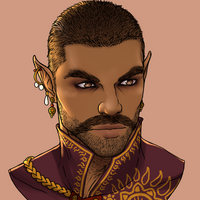 | |
| Race | |
| Pronunciation | Soo-vee-al |
| Classification | Magus |
| Common Nicknames |
|
| Languages | Agasi and in some rare cases Altalar. |
| Racial Traits | |
| Distinctions | Contemplative, Spiritual, Demon-taming Fire-Elves. |
| Maximum Age | 500 (though functionally undying) |
| Height | Average to tall |
| Eye Colors | Any shade of brown and rarely green. |
| Hair Colors | Any dark Brown, Black, and reddish Brown shade. |
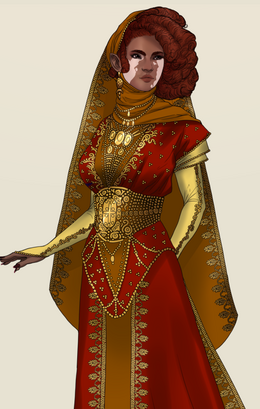
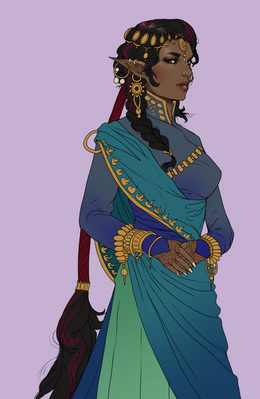
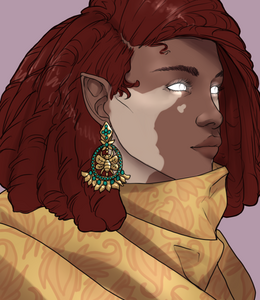
Hailing from the Suvial Princedoms of Agnevaal, in their native tongue the Agne ke Vïjaya Raajecemaan, the Land of Fire, and the Scars of the World, are the Suvial, a very distinct branch of Allorn Elves that have ventured in a radically different direction than the other Allorn Revanchists or even the Regalian Realists. The Suvial represent a people who have achieved transcendent Magical control beyond that of other Races, not specifically in their ability to cast Magic better but not to be constrained by the Dimensional forces that naturally tear each other apart. The Suvial stand strong in their Mysticism, limited adherence to the Estelley faith, and fiercely independent attitude towards both Kathar and Allorn encroaching Empires.
Core Identity
To be a Suvial is, at its core, a creator of compromise between opposing ideologies, between opposing realities, and between opposing forces. Suvial generals and tacticians marry both a decentralized asymmetrical warfare theory with strong centralized command. Suvial Mages combine Void and Exist Magics in ways even the strongest of Mages of Allorn old could only ever dream of. Suvial diplomats proliferate with their unique combination of espionage, subtle encouragement, and lavishly gregarious public appearances to win over any crowd despite their insidious political reputation. Suvials are great deal makers and world builders who take many opposing forces and somehow make them work.
Transcendence
The concept of unifying, combining, marrying, or harmonizing opposing forces means so much more to the Suvial than unlocking the potential of symbiosis. The idea of harmony in spirit, body, and mind is central to Suvial learning and is found even in concepts like art, architecture, and cuisine. The Suvial consider the reality that other Races are anchored to as archaic, banal, and unworthy of observing the basic tenets of, instead trying to break it and prove their intellectual and insightful superiority over all others.
Land of Fire
To call fire a strong theme or symbol in Suvial culture is an understatement - the reality is closer to an obsession. Fire symbolism is everywhere in their clothing, jewelry, architecture, and how they cast Magic. To see a Suvial who does not use fire as a conduit for their spellcasting is odd, one that the other Suvial are not too keen on. Therein also lies a hidden truth of the Land of Fire: extreme conformity, and expulsion for those who cannot conform.
No Servants, No Masters
The Suvial are constantly beset from all sides by their enemies. Eronidas from the north, Kathar from the southwest, and Allorn from the southeast. With their lands under near-constant invasion and their borders being in a state of near-constant skirmish, the Suvial have learned to trust slowly and keep one’s enemies close at heart. They are uniquely lacking in alliances with others, and they are an ex-Allorn state without slavery, instead replacing menial labor forces with imprisoned Demons, showcasing their other great skill: Demonology. Suvial Demonology is so widely accepted that even a skeptical state like Regalia has laws that make Suvial legal and free to practice Demonology when all other Races cannot.
Design
Physical Characteristics
The Suvial are similar to the Teledden but the Suvial are solely Indian-coded from the real world, with medium-dark to dark skin tones. Compared to the other Nelfin Races, the Suvial have fuller or rounder facial features but keep standard Nelfin height and pointy ears that tend to have a bit more of a quirky curve to the tip than other straight-pointed ears. The Suvial have an otherwise broad physical capability, never limited to slim body builds, or a complete lack of facial or body hair. Suvial mostly have black or very dark brown hair and brown eyes, though some can also have green or lighter cream-brown eye colors and lighter or reddish brown hair colors. Suvial are ageless: they look young forever, even into old age, but can choose to look older inside of adult age ranges.
Mental Characteristics
The Suvial tend to be more calculated, less outspoken, and less extravagant, at least in public, than the other more passionate and self-aggrandizing Nelfin. Suvial by nature are more reserved, wanting not to give away everything about themselves to strangers, and take time to warm up to new people. When comfortable, however, Suvial can be some of the warmest and perhaps also most invasive people that can be found. An Ailor saying goes that the whole Suvial Race is like one’s grandmother or overbearing mother, always trying to make sure their friends are well clothed, well fed, well-housed, and warm. The Suvial often seek to improve the lives of their friends and loved ones, mostly without asking, even when the said offer was declined. In tense and hectic situations, Suvial usually keep their cool, observing a situation at length to calculate the possible outcomes before acting on anything.
Heritage Traits
When designing a Character, Proficiency Points allow for a limited Ability selection with Point Buy Packs. Heritage Traits adds free Packs and Mechanics on top of that to help with cultural themes. Free Packs usually grant Abilities, while Mechanics usually change how a character functions in Roleplay through subtle, out-of-combat ways. In essence, Mechanics add aesthetic flair that invests in the niche of each culture. Free Packs never raise Proficiency Points, but the character must be able to purchase them normally. (ex. If a character is a certain Affinity that locks them out of a category, they cannot take that specific free pack and must choose the alternative option.) If a Free Pack grants Magic of some type, that Magic can be of any Alignment the character can normally choose, or limited to a select alignment, which will always be written in the Free Pack description.
Mixed Heritage characters (i.e. characters born from two parents of different Cultures) may take one parent's 'Free Packs' and mix and match up to 5 Mechanics from both parents, although some People cannot produce Mixed Heritage children (due to Magical/Fantasy reasons).
Free Packs
- Suvial can choose one Pack from either Magic Point Buy, or Melee Point Buy Categories.
- Suvial can choose one Pack from either Magic Point Buy, or Training Point Buy Categories.
Mechanics
- Suvial gain +1 Main Combat Stat when attacking a Character with Theurgy Point Buy Abilities, which can break Cap up to 11.
- Suvial can gain additional Event insight into past Battles or Wars or Conflicts, related to Progressions or History related Events.
- Suvial are never punished by their Gods or their society for using Dimension Alignment out of their norm (Exist), even as God Mages.
- Suvial are never punished by their Gods or their society for the use of Sinistral Magic variants, even in the use of God Magic.
- Suvial are exceptionally proficient at controlling Spirits, allowing them a range of mechanical functions to do with Spirits (see Karamatology below).
Karamatology
The Suvial are masters of the Spirit realm, capable of connecting, controlling, and otherwise influencing Spirits to a higher degree than any other people of Aloria. Firstly, Suvial are never Afflicted when they are possessed or contain several Spirits, as their soul is properly shut off from the Spirits. This also means that they can never lose control, or have the Spirit take over the host without them specifically allowing it and setting the boundaries for that control. Secondly, they never lose control over the Spirits they control and can thrall any (non-Player/Event) Spirits (and even Player Spirits with Consent) at will. Stolen Spirits from another player can only be retrieved if the Suvial is KO'd. Lastly, they can also force Spirits into Canoptic Jars, and give them to others, though others may not have the same possession protections Suvial have and end up possessed in an unpleasant or non-positive way.
Flames Unending
The Suvial people are undying, also part of the reason why the Allorn and Kathar Empires have such a hard time invading their land. When a Suvial is killed, they are reborn from the flames of Avinla after 3 hours in the nearest shrine to Avinla (which is the Avinla Fire Shrine in Regalia). This means that since Avinla was petrified during the last Void-Out in 173 AC, all Suvial stopped dying of old age or in battle, though new Suvial could still be born, and they still aged like normal. This is not considered a good thing among the Suvial, because as they continue to age, their mind and body deteriorate, and they eventually become host to some hostile Void or Exist demon as their mind is incapable of stopping such invasions. The Suvial collectively are on a mission to seek out Seraph knowledge to restore Avinla, because their rebirth cycle is intrinsically linked with the Mother of the Fire Lands, and so they are unable to properly pass into the afterlife while she is gone. Very few Suvial think this is a good state of being, but those are generally regarded as insane because the eventual loss of self to Demon infestation is not considered a pleasant way to lose your identity or self-control. Many of the older Suvial who are past their natural life span have to retreat into monasteries or silent places to fortify their meditation just to keep away the Demons that pluck at their minds, or in opposite direction, seek extreme amounts of high energy activity in places like Regalia to distract their minds so the Demons have no doubt or idleness to latch onto. Because of this function, Suvial cannot become Ordial Aligned, Geists, or Undead, except through the actions of Ordial Entities, or their request to them. This mechanic only applies to full Suvial Characters and does not apply to Mixed Heritage Suvial.
Cultures
Suvial Culture is equally divided between the three major peoples, the northern Agalocaï who are immensely scholarly and spiritual, the Vadyalocaï who live in the regional plains and central urban centers with their strong connection to Magic and Demonology, and the Kattumakkal who mostly inhabit the southern islands, suffered the most at the hands of the Kathar, and developed a dominant militarism because of it.
|
Suvial Cultures | ||
|---|---|---|
|
The Agalocaï people hail from the northern regions of the Suvial homeland, with its vast mountains and smoldering volcanoes. This region is home to the largest Temples and spiritual centers of learning, as well as various invading Eronidas peoples. | ||
| ||
|
The Vadyalocaï people hail from the more gentle central plains and the major urban centers of the largest landmass, as well as the eastern coastlines of the Suvial homeland. The Vadyalocaï are known as the most prolific Mages and Demon trainers among the Suvial, and the frontline against the Allorn Empire. | ||
| ||
|
The Kattumakkal people hail from the southern islands, those which have largely been destroyed or annihilated by the Kathar Void-outs. The Kattumakkal are far more rugged than the other Suvial people, hardened by years of training and the constant loss of loved ones to savage Kathar attacks. | ||
| ||
History
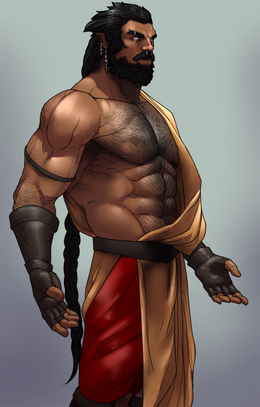
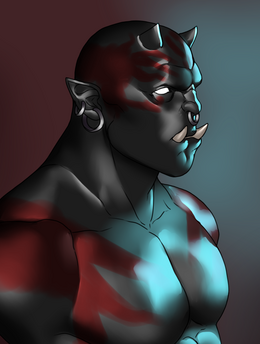
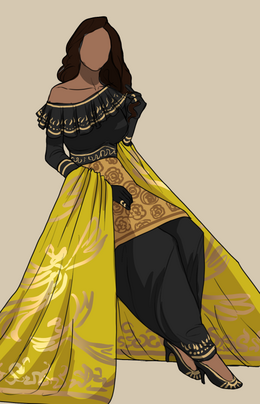
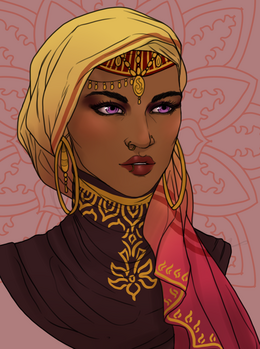
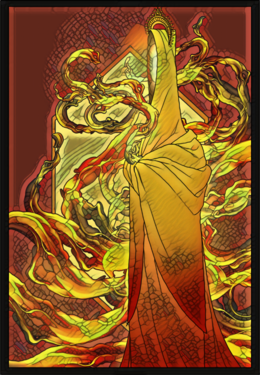
Suvial history is difficult to fully verify because many of the primary sources have long been lost to time, during the Sanraan schism that occured very early in the foundation of the Allorn Empire. It is a little-known fact among the Allorn people that Talea was not the only child or creation of Estel, and that there were three more, Sanraan the younger brother, Alaïaam the younger sister, and Fenhëlley the youngest brother. The youngest two largely disappear from the historical narrative, but Sanraan poses an important contestor of Estellian legitimacy, claiming the throne as the first Emperor of the Allorn Empire, yet being out-competed by Talea who enjoyed more military support and subsequently went on a conquest rampage across the Teledden Principalities. Sanraan’s pro-peace and pro-politics approach to religious unification was outmatched by warfare, and many of Sanraan’s supporters were either killed or forcibly expelled to the Western Firelands, the name for Agnevaal at the time.
In these fiery mountainous lands, and with the help of the Goddess Avinla, the Suvial managed to thrive against all odds and develop a complex and diverging cultural collective that became more and more separated from the Teledden baseline to the point they were considered different Races all together, albeit with a common history. For a dozen or so thousand years, the Suvial remained mostly a backwater province that paid tribute to the Allorn Empire though had self-governance, before it saw fit to break free and establish a military presence of its own. Why the Allorn Empire did not invade and crush the Suvial this early on is unclear, though scholars speculate this was because the Allorn Empire was already in an early state of decline where its politicians did not see fit to look anywhere outside the borders of the “perfect Empire”. The Suvial in turn were content to live their life in relative isolation and had little contact with the Allorn Empire at large.
In the last few thousand years of the Allorn Empire’s existence, the Suvial took a more keen note and were horrified about what they found, the deep level of political, social, economic, and political decadence, a stark contrast to the structured centralization yet flexible local administrations that make Suvial politics strong, while the Allorn was immensely corrupt. The Suvial started a program of mass armament and learned all the things that went wrong in the Allorn Empire while sitting back and watching it all collapse during the Void Invasion and subsequent Eronidas invasion. The Suvial in turn were also raided on their north coast by colonizing attempts from the Eroniadas resulting in the Fire-Clan Wars, while the sudden arrival of the Kathar Empire to the south started the still enduring Dark-Empire War. The Dark-Empire War resulted in the eventual creation and deployment of Kathar Void-Outs and Suvial Fire-Scars, massive regionally destructive events that killed millions on both sides and turned the war savage, continuing to affect the Suvial psyche and Kathar hatred to this day.
Language
The Suvial speak their language called Agasi which is distinct from Altalar, though still part of the larger Nelfin language family. Agasi has a verb base in Hindi but is modified with Elven accents like ë, ï, double vowels, and soft consonants to produce a more fantasy-like version reminiscent of Hindi than a one-to-one copy. Naming however can be taken directly from the cultural variants, for example, Agalocaï Suvial can take names from Punjab/Kashmir regions of real-world India, Vadyalocaï Suvial can take names from Maharashtrian naming customs, and Kattumakkal can take names from Tamil naming customs.
Religion
Suvial follow the religion of Estelley, but with some important distinctions. They emphasize the prophet Sanraan to a degree over the other two, while still considering the others valid because he helped found the Suvial as a distinct identity and a breakaway from the Allorn hegemony. They also favor the goddess Avinla over the others because her patronage to them has saved them from many a disaster, and her current petrified state is the direct result of her aid to them to protect them from the Void-Outs. A very small minority of Suvial have turned to Draconism for defense against the Kathar, but this is an insignificant fraction.
Families
Suvial marriages across various cultures are often entirely political, arranged, and purely with allied families. It is very common for the Suvial to have multiple spouses, for example, a husband from an allied family, two wives from a subject family, and one husband or wife that they consider their true romance partner. The concept of marriage among the Suvial is not the same as other Races, which can often lead to some confusion, as Suvial see marriage more as an eternal political bond that can even be made between best friends, rather than an agreement to procreate or be in a romantic relationship. The Suvial are harsh on their children, and some would even say harsher on their elders. While respect and dignity towards the elders is common and older Suvial live with their younger children, when a Suvial reaches a certain age that hostile demonic possession becomes more likely, they are retired in isolation, either in a separate part of the home not accessible to others, or to Temples. Children receive some of the world’s best education but are relentlessly hounded to perform and achieve higher degrees of success to the point of severe stress and lack of parental love.
Fashion
- Agalocaï Suvial: The Agalocaï dress is comparable to real-world Punjab traditional dress, with dark strong colors, and a notable favor towards flamboyant and curved footwear such as the Jutti. Women wear the Patiala Salwar with an optional dress and long-sleeved half-dress over the top while wearing all manner of see-through silk veils. Men wear the Jama, which is a thick cotton long-sleeve coat and long-skirt combination, with rich embroidery. Men also wear the Kurta Pyjama, a very long shirt with slashes on both sides of the sleeves, with wide sylvan pants underneath. Women wear the Parandi, which are long tassels, jewelry, bells, and chimes attached to long hair or ponytails while also covering their hair with a veil. For men, it is nigh impossible to find an Agalocaï man without a Turban, the real-world Dastar, which is an extension of Agalocaï self-respect and spirituality.
- Vadyalocaï Suvial: The Vadyalocaï dress is comparable to real-world Maharashtrian traditional dress, with vibrant colors for both men and women. Both upper and lower classes wear the same styles. Women wear either loose silk pants or a dress, along with a short-sleeved shirt that exposes the midriff, which in turn is covered by a long fabric tied from the back diagonally across the front and flung over the shoulder, which is long enough to fall close to the floor again, or wrapped over the head like a veil. Men wear a Dhoti (a piece of cloth tied around the legs to appear like pants tied at the waist) along with a shirt, and usually some sort of headcover like a cap or Pheta (similar to a turban).
- Kattumakkal Suvial: The Kattumakkal dress is comparable to real-world Tamil traditional dress, with strong vibrant colors for women, and white for men. The upper-class wears clothing similar to the Pavada (a half sari combined with a long shawl), while the lower class wears clothes similar to the Salwar Kameez (a loose dress/trousers with a long top and bare arms). Men wear the Lungi on the lower body (a wrap-around rectangular cloth tied around the waist). For the upper body men wear either a brocade vest, shirt, or an Angavastram, which is a long cloth hung around the neck with the chest bare, or wrapped diagonally across the chest and covering one arm. Both men and women adorn excessive golden jewelry and women often wear flowers in their hair.
World View
- The Suvial love tall buildings, but don’t understand why Ailor build buildings from the ground up, instead of top down. When Suvial build, they build the first layer, then magically levitate it, and build a larger layer underneath, and so forth, producing tall layered buildings.
- The Suvial rarely if ever work with technology, even if Bidriq Tech is their branch of technological design. Bidriq in the Suvial lands is almost exclusively used for weapons and biotics because Magic and Demonology are much stronger in their eyes.
- The Suvial have a thriving military equipment industry and are the only race besides the Ailor who have adopted the Matchlock Rifle design (most likely stolen with industrial espionage) though richly decorated with ivory. They also use a variety of curved swords, short bows, lamellar armor with extra plating, and short weapons, like the Kartar, Trehsool Mukh, and a variety of spiked gloves.
- The Suvial have a long tradition of military storytelling, fond of mock battles and tales of the great achievements of their ancestors. Most Suvial can recite an epic or two about a siege that occurred near their hometown, and the deeds of the heroes who fought there.
- Suvial war games are so common they developed a whole game called Yuddhel, which involves a very large playing field (with item frames), and (Minecraft maps) having ship types and army formations on them, throwing dice to declare victors when they clash, with each type having special dice rolls.
- The Suvial have a very expansive cuisine that uses large amounts of dairy, warm spices, and fruits to fill out its range of taste. As the only Nelfin culture that flavors its food beyond the barest minimum, Suvial cooking is very popular abroad.
- Suvial architecture tends towards warm, orange-brown, and sandstone colors, decorated with bas-relief carvings and other complex stonework. Wood is not a very common material because the heat and humidity in Agnevaal destroy wooden buildings very quickly, not to mention the fire hazard.
- The Suvial consider fire-whip and fire-chain spells very elegant ways to visually display fire magic, favoring them over simple bolts or waves, though there is nothing wrong with using those in a pinch either. A real weapon designed in emulation of these fire spells was the Urumi sword belt, a flexible whip blade that can be worn around the waist.
- Manuals and treatises are dominant in Suvial literature. There is a solution for everything, from books on how to lead small groups to essays dictated by a sage a millennia ago on the proper maintenance of cartography tools. Ask a Suvial for the best way to solve a problem, and expect to be handed back a leaflet from the Middle Allorn period two days later.
- All Suvial see the profession of military command as very prestigious. War is an art in and of itself, the one with the most human effect and empathetic results if a general is good or bad, and so the position of Commander of any kind is an honored one. This is a double-edged sword, though- Suvial are quick to condemn bad leaders, and get rid of them as soon as possible.
- The Suvial have been known to indulge in different kinds of vision-inducing psychedelics. The most famous of them all is Avinla Spice, named after the goddess who supposedly created the plant in her final hours before calcification. The Spice grants its consumers intense visions of battle with the Kathar from the past, at both the sea and on land.
- The Suvial are the inventors and innovators of Nelfin tea culture, which is as large as its Sihai counterpart (ironically from the other side of the world). The Suvial themselves prefer black teas, often with milk, most popular of all being masala chai (including cardamom, cloves, cinnamon, star anise, and ginger), made and drank warm in public.
- Suvial are culturally encouraged to be more serious and close about their friend groups, considering many of the bonds formed as adults more meaningful than those with their own family. Parents and elders are owed respect and obeisance, but true companionship is supposed to be found with contemporaries, a gap that parents are not considered to fill.
- The Suvial initially had a hard time integrating into Regalia due to their connections to Demonology and Magic, but in recent years were granted a legal exemption on Demonology usage because Regalia was so deeply infested by them, and the Suvial proposed the only viable way to solve the ongoing and exploding problem: by subjugating them. Thus a compromise was struck that would allow the Suvial to safely vacuum up the Demons, and keep them as pets.
- Though both the Kathar Princedoms and Suvial Princedoms unleashed Void-Outs and Fire-Scars on each other without abandon, with the disappearance of Avinla, the Suvial have lost the capacity to use Fire-Scar magic. To their relief, however, Avinla’s final act prevented any further Void-Outs.
- The reason why Suvial cannot be Ordial inclined is that they are the “children” of the exalted Empress of Life, native to the land of passionate fires of existence, and in part looked upon favorably by the Dragon of Fire Caius, all of which factors which reinforce their spiritual connection with life, and inner rejection of undeath and all Ordial entities.
Trivia
- While Elephants are a hugely important symbol for the Suvial people, especially the Vadyalocaï people, Elephants are extinct in the Suvial homeland due to a combination of overhunting for ivory and the Void-Outs. This is the reason why so many Suvial people are intensely environmental, as the saying among them goes, “We learned too late the importance of safeguarding the precious gifts of nature. The parting gift of the elephant was the wisdom to be good stewards of the next land."
- The Suvial have a very reverent attitude towards things they do not understand in the world, always seeing the world as a mother who cherishes her children, and by extension seeing less and less as mysterious and more as benign and glorious even.
- Equally, however, Suvial are also capable of extreme calculative coldness. One of the Suvial sayings goes, “If the Kathar did not want to be killed, then why is it so easy?”
| ||||||||||||||||||||||||||
| Accreditation | |||||||||
|---|---|---|---|---|---|---|---|---|---|
|
| ||||||||
